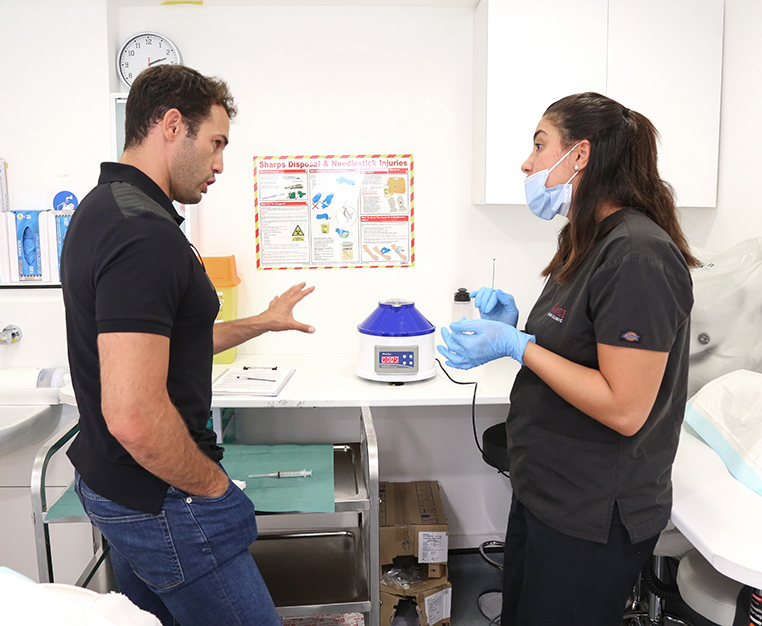Not so long ago, public awareness of alopecia wasn’t that high. Little was known about the condition, and few people with a public profile were prepared to speak out when they had it. All that, thankfully, has changed. People like Jada Pinkett Smith, Viola Davis and Matt Lucas have spoken publicly about their experiences of alopecia. In doing so, they have created opportunities for people not in the spotlight to be more open about the condition. This, in turn, has led to conversations about the various ways of treating alopecia.
This article is going to look at some of the ways of treating different forms of the condition. Keep scrolling to find out more!
Alopecia Types
Alopecia is a catch-all term used to describe several types of hair loss with different causes and prognoses. Androgenetic alopecia is the most common form of baldness, as it covers male and female pattern hair loss. Telogen effluvium is a form of hair loss often caused by stress or trauma. Traction alopecia occurs when the hair is pulled too tightly over a prolonged period. Hairstyles such as ponytails, braids and extensions are often the cause. Trichotillomania is a psychological condition that causes the individual to pull out the hair from their scalp, eyebrows and eyelashes. Scarring alopecia has different causes, but the result is the same in all. The hair follicles are destroyed and replaced by scar tissue. Anagen effluvium is the term for hair loss that follows a course of chemotherapy.
Alopecia areata: Alopecia areata is an autoimmune disorder that takes different forms. The three main types are patchy alopecia, alopecia totalis and alopecia universalis.
Treatments and Procedures
A consultation with a hair expert will help you identify the sort of hair loss you’re experiencing and the most appropriate treatment. These days, there is a wide range of treatments and procedures available, including hair transplant surgery, medication, micro scalp pigmentation (MSP), platelet-rich plasma (PRP) treatment, mesotherapy and laser cap therapy.
The treatments mentioned focus mainly on scalp hair loss. There are treatments designed specifically for people suffering from alopecia totalis and alopecia universalis who have also lost eyebrow and eyelash hair. These treatments tend not to be so well known, so it might be useful to namecheck some of the options here.
Microblading
In the same way that MSP creates the illusion of a shaved head, microblading uses ink to fill in thin or nonexistent eyebrows. The ink is inserted into micro incisions that are made on the eyebrow line. People who have had the treatment describe it as being like getting a tattoo only much less painful. The reason is that microblading works at a more superficial level so that the needle doesn’t penetrate as deeply. The procedure can be carried out in a single session of a couple of hours or so, but often a second visit is required to add the final touches. The result looks completely natural, but future top-ups are needed, as the ink begins to fade after about a year.
Nanoblading is a variation of microblading that uses thinner needles, while microshading uses tiny pigmentation dots to create the look of an eyebrow.
Extensions and False Eyelashes
Eyelash extensions are an option for alopecia sufferers who still have enough lash left to which the extension can be attached. The extensions have to be glued on by an experienced practitioner and last for roughly two weeks. While they provide impressive results, extensions can be high-maintenance and need to be regularly replaced.
Individuals who don’t have sufficient lash on which to attach extensions are left with the option of false eyelashes. With these, the strip is glued to the skin just above the eyelash line. Unlike extensions, false eyelashes tend to be single-use items that are removed at the end of the day.
Eyebrow and Lash Makeup
Not everyone wants to go to the trouble or expense that a cosmetic procedure involves. For those with that mindset, makeup provides some creative solutions. Brow fillers can help you fill out any hair you may have or create the effect of hair where there is none. They come in a range of pencils, powders and crayons that allow you to give full rein to your artistic impulses. There is also a huge choice of colours that can be matched to any skin tone and hair shade.
Conclusion
Alopecia is no longer a taboo subject. That’s good news for all those suffering from the condition. It means there’s greater understanding in the wider community of what the condition entails, as well as greater awareness amongst those with the condition of the treatments on offer.
If you have concerns about hair loss or thinning, why not speak to a Vinci Hair Clinic expert? We’re one of the world’s largest hair restoration organisations with clinics spanning the globe. We offer all our new clients a free, no-obligation consultation with one of our hair specialists. Get in touch and book your appointment today!


